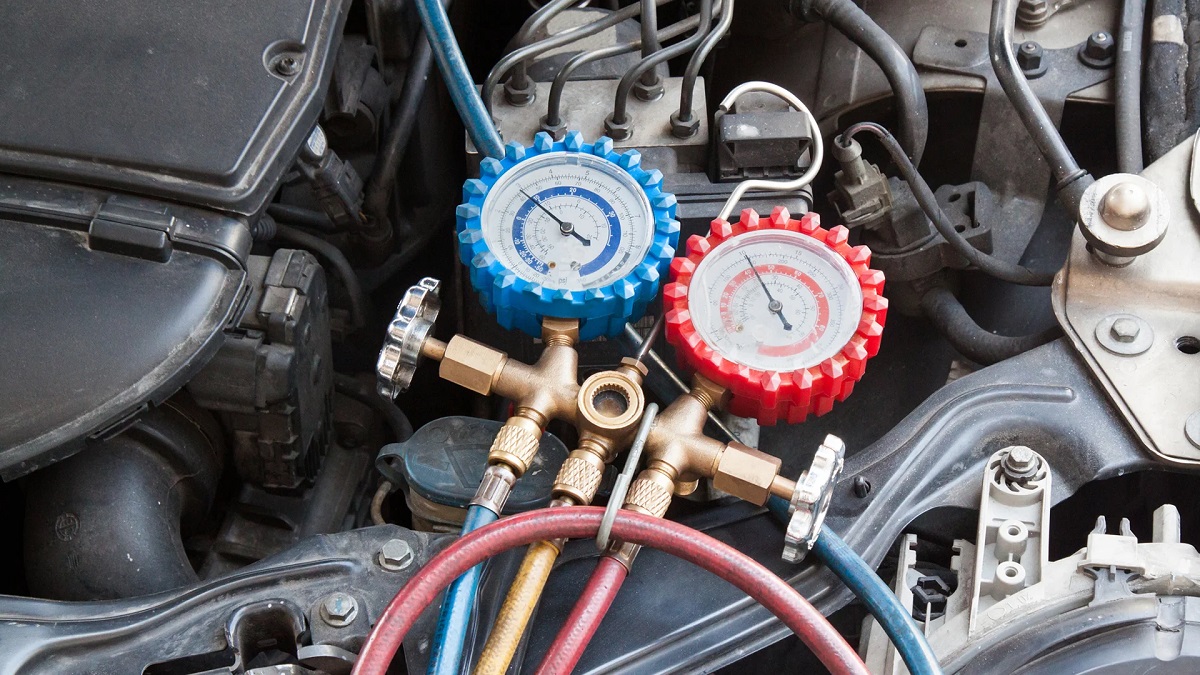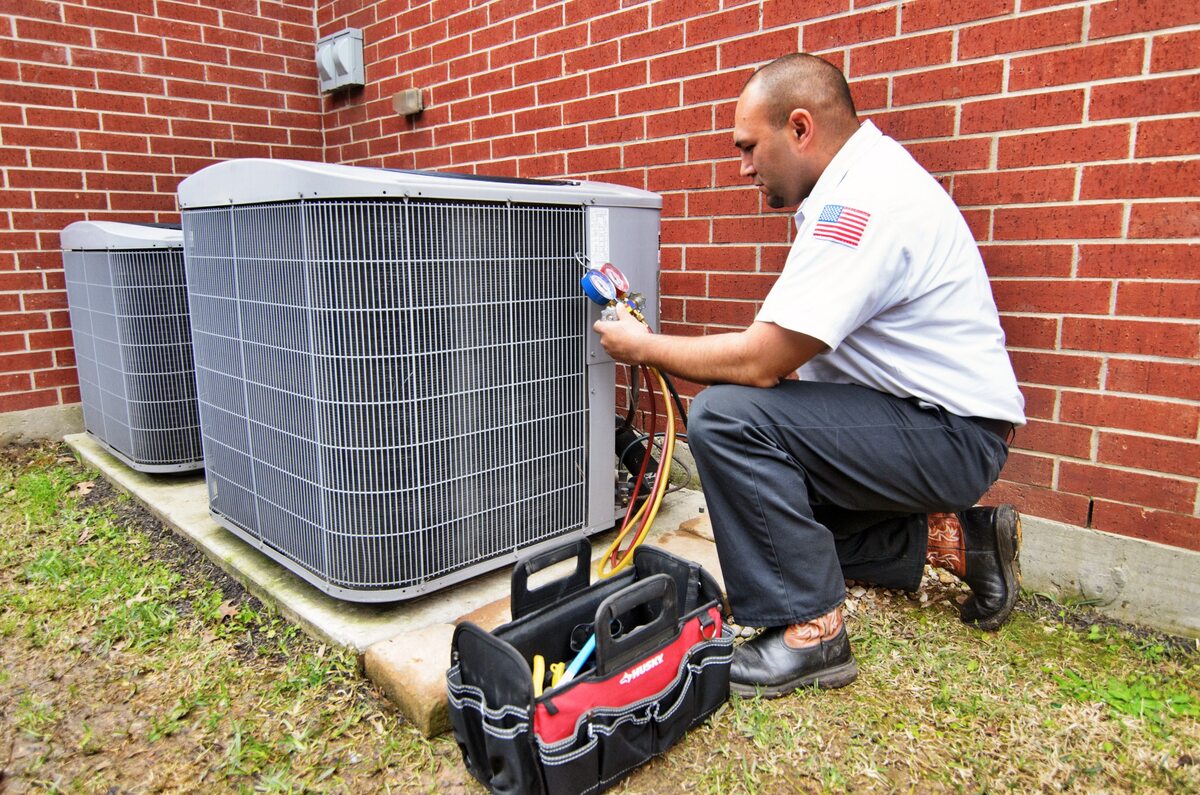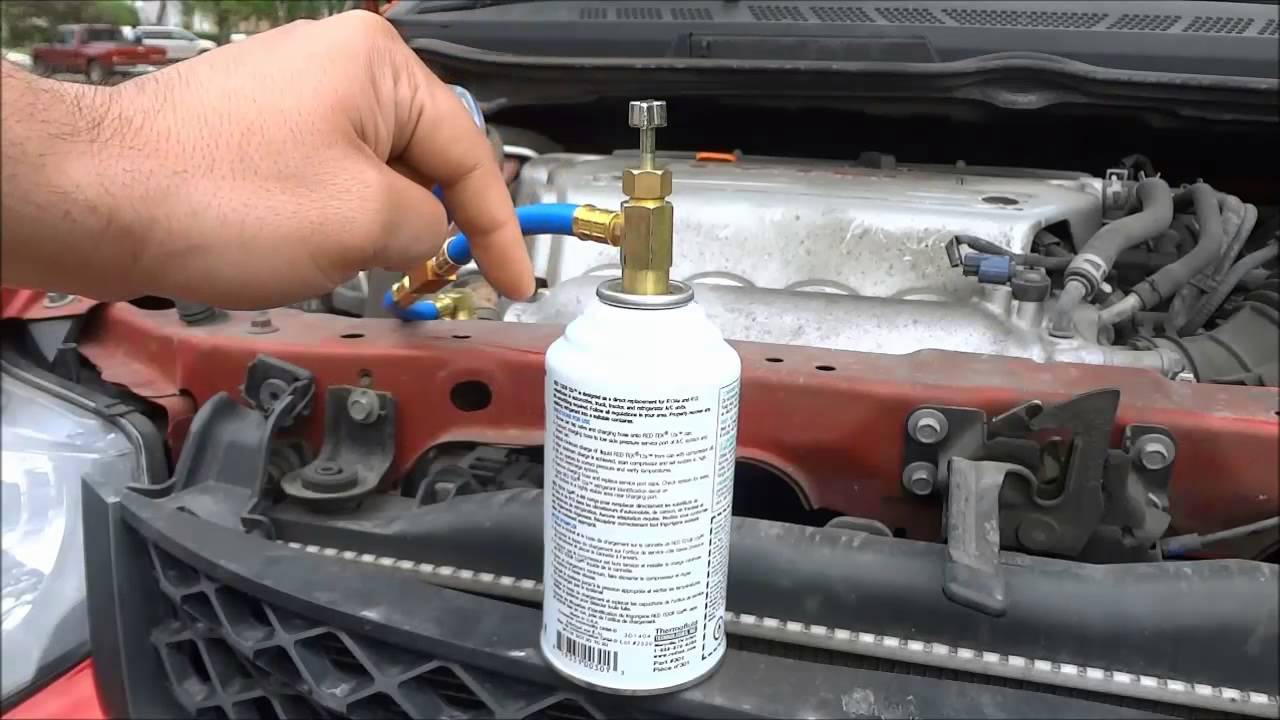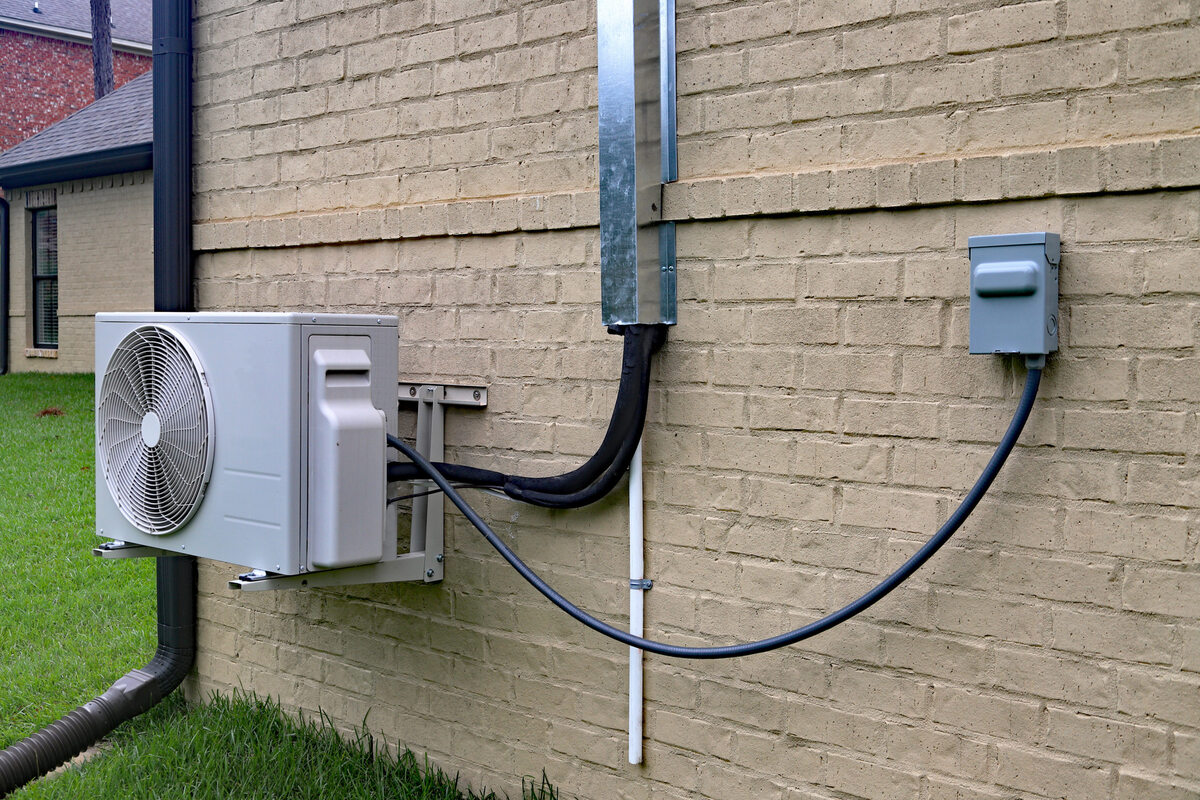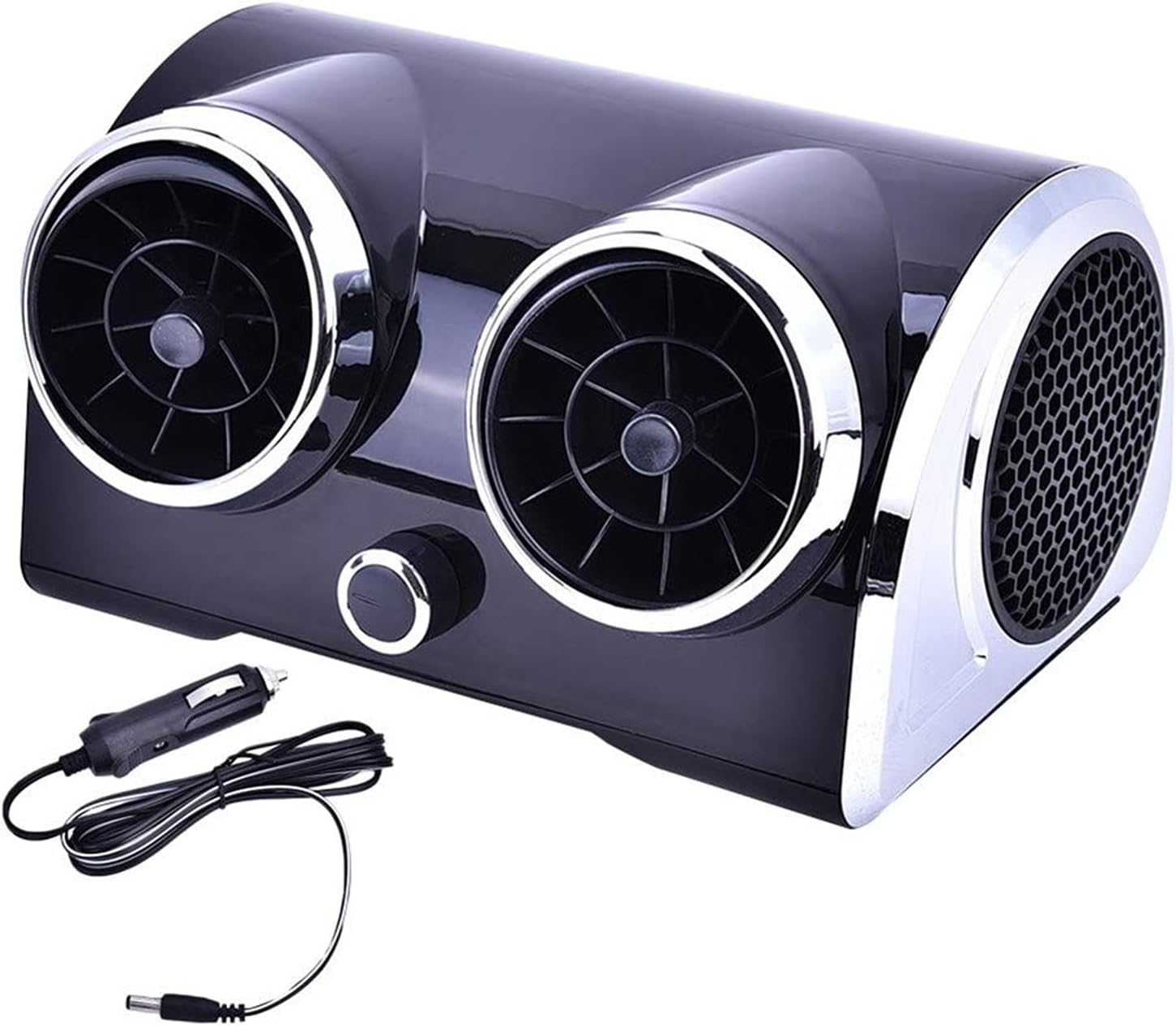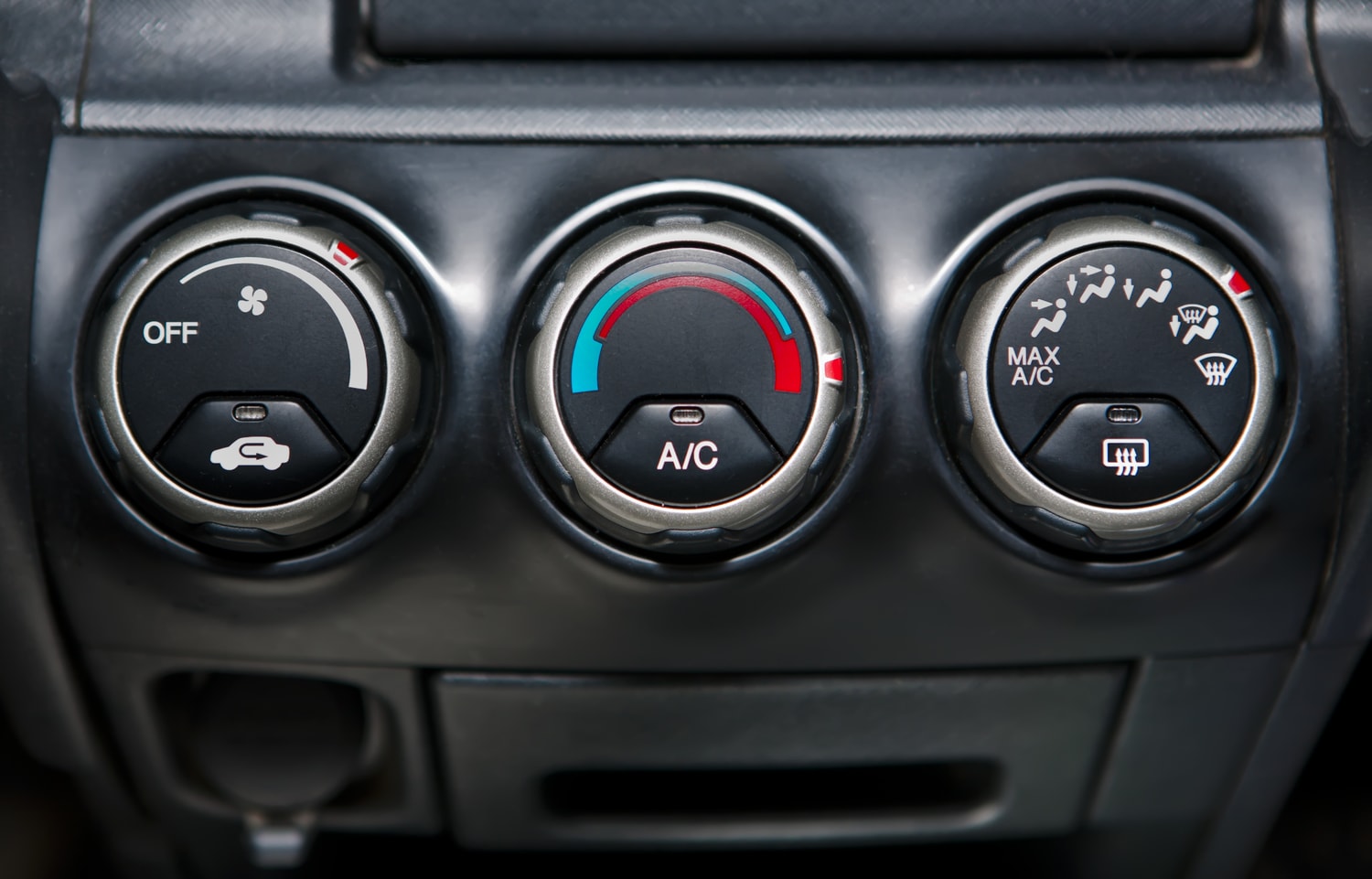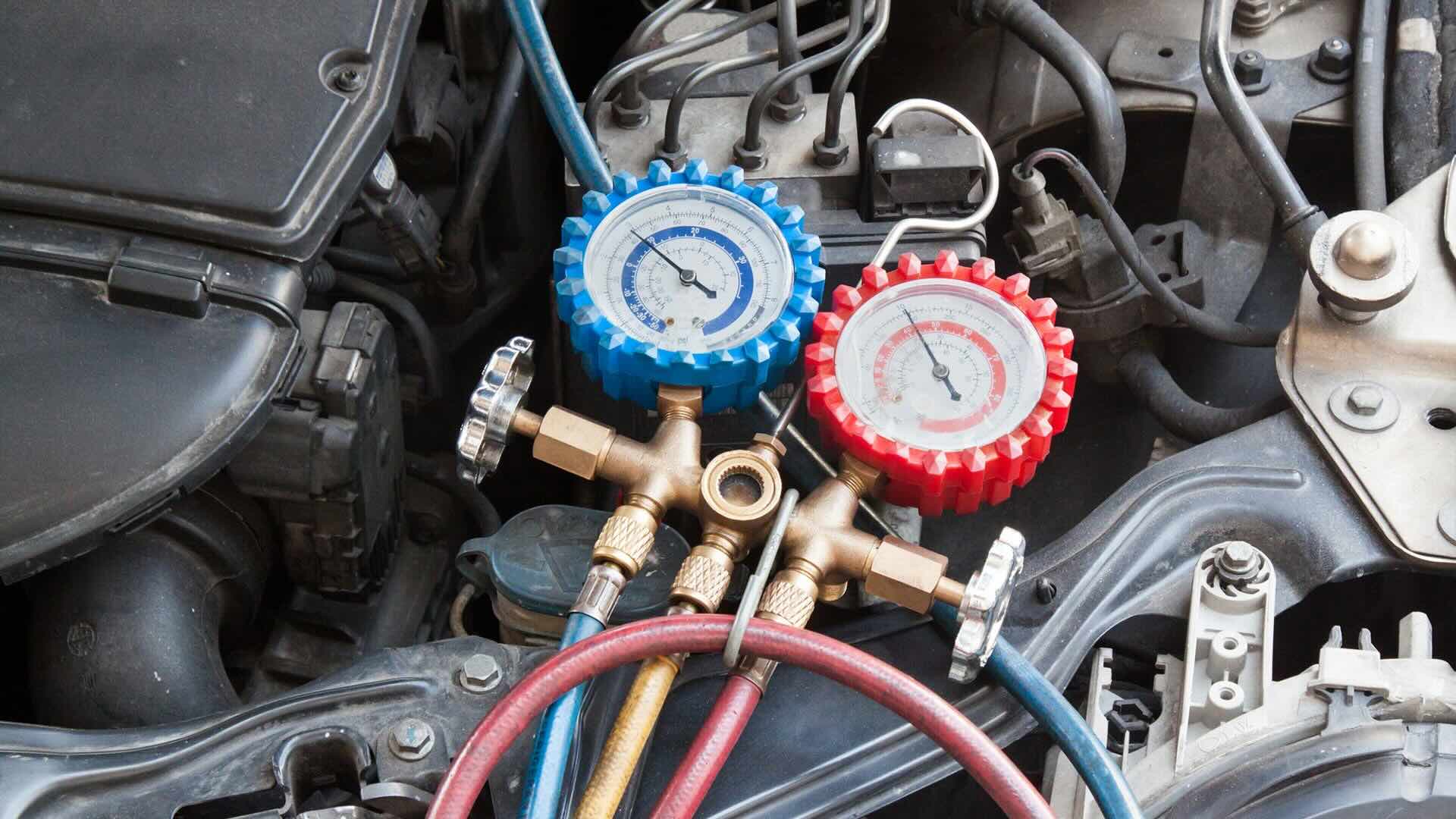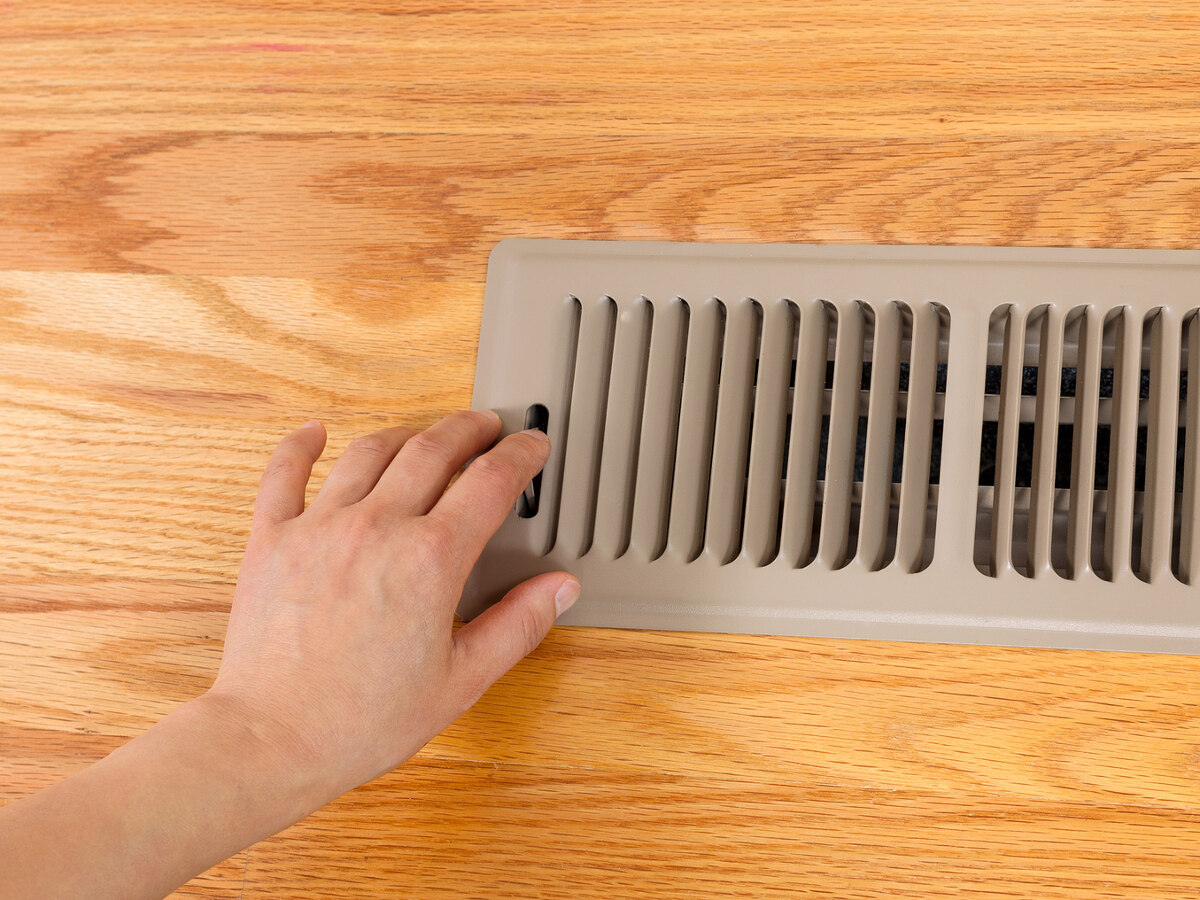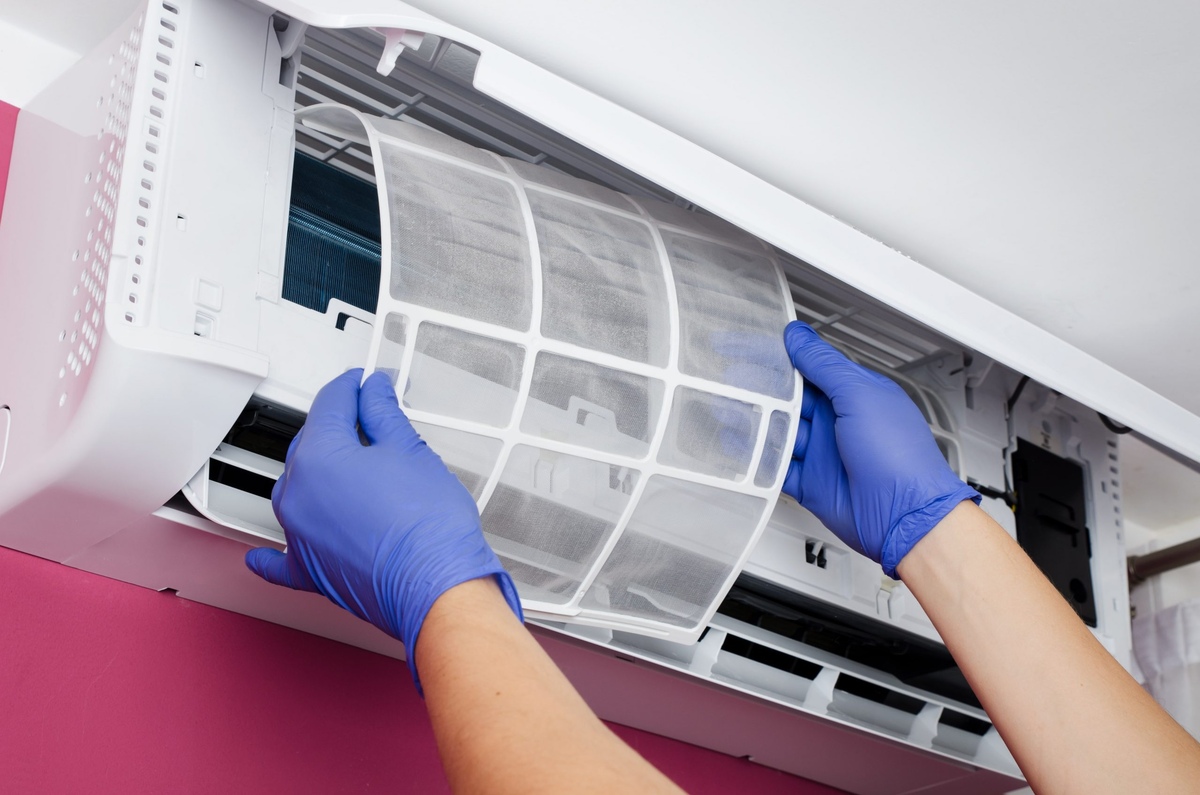Home>Home Maintenance>How To Recharge Car Air Conditioning


Home Maintenance
How To Recharge Car Air Conditioning
Modified: March 6, 2024
Learn how to recharge your car's air conditioning at home with these easy-to-follow maintenance tips. Keep your vehicle cool and comfortable all year round!
(Many of the links in this article redirect to a specific reviewed product. Your purchase of these products through affiliate links helps to generate commission for Storables.com, at no extra cost. Learn more)
Introduction
Welcome to our comprehensive guide on how to recharge your car air conditioning system. As the summer months approach, it’s essential to ensure that your car’s AC is functioning at its best to keep you cool and comfortable during your travels. A properly working air conditioning system not only provides relief from the sweltering heat but also helps dehumidify the air inside your car, improving overall comfort and air quality.
Understanding the basics of car air conditioning and knowing when it needs recharging can save you from expensive repairs and ensure optimal performance. In this article, we will walk you through the process of recharging your car’s AC system, step by step. But before we dive into the process, let’s first understand how car air conditioning works and the signs that indicate your system may need a recharge.
Key Takeaways:
- Keep your car’s air conditioning system in top shape by recognizing signs that it needs a recharge, such as warm air, insufficient airflow, strange noises, and unpleasant odors.
- Before recharging your car’s AC system, gather the necessary tools, locate the low-pressure port, clean the system, and inspect for leaks to ensure a smooth and successful recharge.
Understanding Car Air Conditioning
Car air conditioning systems work by utilizing a refrigerant, typically a substance called R134a, to absorb heat from the air inside your car and transfer it to the outside. The process involves compressing the refrigerant into a high-pressure gas, which then releases heat as it rapidly expands. This cooled gas flows through a series of coils, where it absorbs heat from the air passing over the coils, resulting in cold air blowing out of the vents.
It is important to note that car air conditioning systems are not designed to consume refrigerant. In an ideal scenario, the system will retain the same amount of refrigerant throughout its lifetime. However, over time, small leaks can develop, causing a gradual loss of refrigerant. This can hinder the system’s ability to cool effectively, eventually requiring a recharge.
The key components of a car’s AC system include the compressor, condenser, expansion valve, and evaporator. The compressor is responsible for pressurizing the refrigerant, while the condenser facilitates the release of heat. The expansion valve regulates the flow of the refrigerant, and the evaporator allows the refrigerant to vaporize and absorb heat.
Understanding the basic components and functioning of your car’s AC system will help you identify potential issues and make informed decisions regarding recharging and maintenance.
Signs That Your Car Air Conditioning Needs Recharging
It’s important to identify the signs that indicate your car’s air conditioning system may need a recharge. Recognizing these signs early on can prevent further damage and ensure efficient cooling. Here are some common indications that your AC may require a recharge:
- Warm Air: If the air blowing out of your AC vents is not as cold as it used to be, or if it’s blowing warm air instead, it’s a clear sign that your system needs attention. This could be due to low refrigerant levels.
- Insufficient Airflow: If you notice a decrease in the airflow from your car’s vents, it could be an indication that the AC system needs recharging. Insufficient airflow can be caused by clogged filters, but it can also result from low refrigerant levels.
- Strange Noises: Unusual sounds, such as hissing or squealing, coming from your AC system could be a sign of a leak or other mechanical issues. It’s important to get it checked by a professional, as a recharge may not be enough to fix the problem.
- Unpleasant Odors: If you detect foul or musty odors when you turn on your car’s AC, it could be an indication of mold or bacterial growth within the system. A recharge may help temporarily, but a thorough cleaning or disinfection of the system may be necessary.
- AC Cycling On and Off Frequently: If your air conditioning system continuously cycles on and off in short intervals, it could be a sign of low refrigerant levels. This may indicate a leak that needs to be addressed before a recharge.
- Visible Leaks: If you notice any signs of refrigerant leakage, such as oily residue or visible refrigerant pooling under your vehicle, it’s crucial to have the system inspected. A recharge may not be effective if there is an underlying leak that needs repair.
If you experience any of these signs, it is advisable to have your car’s AC system inspected and serviced by a qualified professional. They can diagnose the issue and determine if a recharge is necessary or if there are underlying problems that need to be addressed.
Preparing for Recharging
Before you begin the process of recharging your car’s air conditioning system, there are a few important preparations you need to make. These steps will help ensure a smooth and successful recharge:
- Gather the necessary tools: To recharge your AC system, you will need specific tools and equipment. These may include a recharge kit with a pressure gauge, refrigerant cans with the correct type and amount of refrigerant, safety goggles, gloves, and a hose with fitting adapters. It’s important to have these tools at hand before beginning the recharge process.
- Familiarize yourself with the user manual: Each car’s AC system may have slight variations, so it’s essential to consult your vehicle’s user manual for specific information and guidelines. The manual will provide valuable instructions regarding the location of AC system components, access points, and safety precautions.
- Locate the low-pressure port: The low-pressure port is where you will connect the recharge hose to add refrigerant to the system. The location of the port can vary depending on the make and model of your vehicle. Refer to the user manual or online resources to find the precise location of the low-pressure port.
- Clean the system: Before recharging, it’s important to clean the AC system to remove any debris or contaminants that may interfere with the recharge process. You can use a can of air conditioning cleaner or compressed air to blow out dust and debris from the vents and air intake.
- Inspect for leaks: It’s crucial to check for any visible signs of refrigerant leakage before proceeding with the recharge. Look for oily residue, refrigerant pooling, or damaged components. If you detect any leaks, it’s recommended to repair them before proceeding with the recharge.
By following these preparation steps, you will be well-equipped and ready to proceed with the recharge of your car’s air conditioning system. It’s important to prioritize safety and take the necessary precautions throughout the entire process.
Make sure to use the correct refrigerant for your car’s air conditioning system. Consult your owner’s manual or a professional to determine the right type for your vehicle.
Recharging Your Car Air Conditioning
Now that you have prepared for the recharge process, it’s time to proceed with recharging your car’s air conditioning system. Follow these steps carefully to ensure a successful recharge:
- Put on safety gear: Before you begin, make sure to wear safety goggles and gloves to protect your eyes and hands from refrigerant and other chemicals.
- Connect the recharge hose: Take the recharge hose from your kit and connect it to the low-pressure port of your AC system. Ensure that the connection is secure to prevent any leaks.
- Attach the refrigerant can: Take the refrigerant can and attach it to the other end of the recharge hose. Follow the instructions on the can to ensure the proper connection.
- Start the engine: Start your car’s engine and turn on the AC system to the maximum cooling setting. Make sure the windows are closed.
- Add refrigerant: Slowly open the valve on the refrigerant can to start adding refrigerant to the system. Keep an eye on the pressure gauge to monitor the pressure levels. Refer to the user manual or the instructions on the can to determine the correct amount of refrigerant needed for your specific vehicle.
- Monitor the pressure: As you add refrigerant, monitor the pressure gauge. You want the pressure to fall within the specified range for optimal performance. Do not overfill the system, as it can lead to damage.
- Clamp the valve: Once you have reached the desired pressure, close the valve on the refrigerant can to stop the flow of refrigerant.
- Disconnect the recharge hose: Disconnect the recharge hose from the low-pressure port carefully. Ensure that you close any valves or switches on the hose to prevent any leaks or spills.
- Check the cooling: Allow the AC system to run for a few minutes to ensure that the air blowing from the vents is cold. If the air is still not as cool as desired, you may need to add more refrigerant or seek professional assistance.
Remember, it’s important to follow the instructions on the refrigerant can and refer to your vehicle’s user manual for specific guidelines. If you are unsure or uncomfortable with recharging the AC system yourself, it’s recommended to seek professional help to avoid any potential damage or safety risks.
Read more: How To Clean My Car Air Conditioning
Safety Precautions
When recharging your car’s air conditioning system, it’s crucial to prioritize safety and take the necessary precautions to protect yourself and prevent any accidents or damage. Keep the following safety measures in mind throughout the recharge process:
- Wear protective gear: Always wear safety goggles and gloves to protect your eyes and hands from refrigerant and other chemicals. Additionally, consider wearing long sleeves and pants to minimize exposure to any potentially harmful substances.
- Ensure proper ventilation: Work in a well-ventilated area to avoid inhaling any fumes or chemicals. If possible, perform the recharge outdoors or in a garage with the doors open. This will help dissipate any harmful vapors.
- Follow manufacturer instructions: Always read and follow the instructions provided by the refrigerant can manufacturer. Each brand may have specific guidelines or precautions that you need to be aware of, so it’s important to adhere to their recommendations.
- Beware of high pressure: Never overfill your AC system with refrigerant. Excessive pressure can cause damage to the system and potentially lead to leaks or other issues. Monitor the pressure gauge closely and keep it within the recommended range.
- Prevent leaks and spills: Ensure that all connections are secure and tight to prevent any refrigerant leaks during the recharge process. If you do notice a leak, stop the recharge and address the issue before continuing. Clean up any spills immediately, as refrigerant can be harmful and may damage surfaces.
- Dispose of refrigerant properly: Do not release refrigerant into the atmosphere. It is harmful to the environment and illegal in many jurisdictions. Follow local regulations and guidelines for proper disposal of refrigerant cans or consult a professional for guidance.
- Use caution with tools: Handle all tools and equipment carefully to avoid injuries. Be mindful of sharp edges or moving parts when connecting or disconnecting the recharge hose, and always use tools appropriately.
- Seek professional help if unsure: If you are unsure about any aspect of recharging your car’s AC system or if you encounter any issues during the process, it’s best to seek assistance from a qualified professional. They have the expertise to handle the recharge safely and effectively.
Following these safety precautions will help ensure a safe and successful recharge of your car’s air conditioning system. Your well-being and the proper functioning of your vehicle should always be a top priority.
Troubleshooting and Tips
While recharging your car’s air conditioning system can improve its performance, there are a few troubleshooting tips that can help you address common issues and ensure optimal results:
- If the system doesn’t cool: If you have completed the recharge process and the air blowing from the vents is still not cold, it could indicate a larger problem. There may be a leak in the system that needs to be repaired, or there could be other underlying issues. In such cases, it’s advisable to seek professional help to diagnose and fix the problem.
- Regular maintenance: Recharging your AC system is an opportunity to perform routine maintenance. Clean or replace the cabin air filter to improve airflow and air quality. Additionally, check the condenser for any debris or blockages and clean it if necessary.
- Check for uneven cooling: If you notice that certain areas of your car are not cooling evenly, it could be a sign of a clogged or blocked vent. Inspect the vents and remove any obstructions, such as leaves or debris, to ensure proper airflow.
- Preventative measures: To avoid the need for frequent recharges, it’s important to take preventative measures. Park your car in shaded areas when possible to minimize exposure to extreme heat. Additionally, use sunshades or tinted windows to reduce the heat accumulation inside the vehicle.
- Monitor AC performance: Keep an eye on the performance of your car’s air conditioning system and address any changes or issues promptly. Pay attention to any unusual sounds, odors, or fluctuations in cooling efficiency. Early detection and intervention can prevent more extensive damage and costly repairs.
- Consider professional assistance: While recharging your car’s AC system can be a DIY task, it’s not always a straightforward process. If you are unsure or uncomfortable with any step of the recharge, it’s recommended to seek professional assistance. They have the knowledge and experience to handle the job safely and effectively.
By following these troubleshooting tips and implementing regular maintenance, you can help prevent potential AC system problems and ensure optimal cooling performance.
Conclusion
Properly maintaining and recharging your car’s air conditioning system is essential for ensuring comfortable and enjoyable journeys, especially during the hot summer months. By understanding the basics of how car air conditioning works and recognizing the signs that indicate the need for a recharge, you can address any issues and restore your AC system’s performance.
Throughout this comprehensive guide, we have walked you through the process of recharging your car’s air conditioning system, from understanding its components to troubleshooting common problems. Remember to follow safety precautions, gather the necessary tools, and refer to your vehicle’s user manual for specific instructions.
While recharging your car’s air conditioning system is a task that can be done on your own, it’s important to remember that seeking professional assistance is always an option if you are unsure or uncomfortable with the process. They have the expertise and equipment to handle the job safely and effectively.
Regular maintenance, such as cleaning or replacing the cabin air filter and checking for any obstructions, can prolong the life of your AC system and enhance its performance. Additionally, taking preventative measures, like parking in shaded areas and using sunshades, can reduce the strain on your AC system and minimize the need for frequent recharges.
By prioritizing the maintenance of your car’s air conditioning system and promptly addressing any issues, you can enjoy cool and comfortable drives all year round. Stay vigilant, monitor your AC system’s performance, and seek professional help as needed to ensure optimal cooling efficiency in your vehicle.
Remember, a properly functioning air conditioning system not only keeps you cool but also contributes to the overall comfort and air quality inside your car. So, stay cool and have a pleasant journey!
Frequently Asked Questions about How To Recharge Car Air Conditioning
Was this page helpful?
At Storables.com, we guarantee accurate and reliable information. Our content, validated by Expert Board Contributors, is crafted following stringent Editorial Policies. We're committed to providing you with well-researched, expert-backed insights for all your informational needs.
